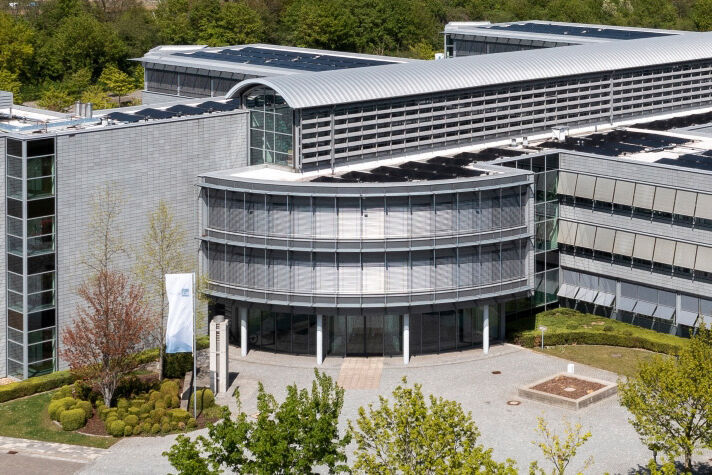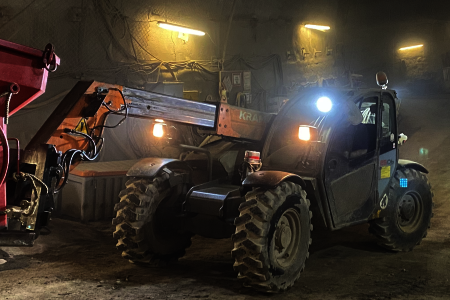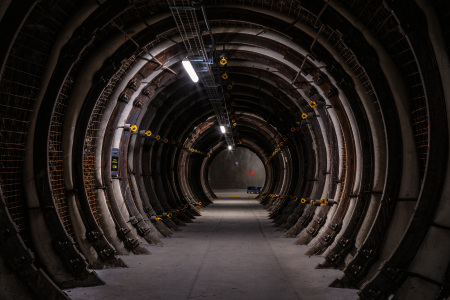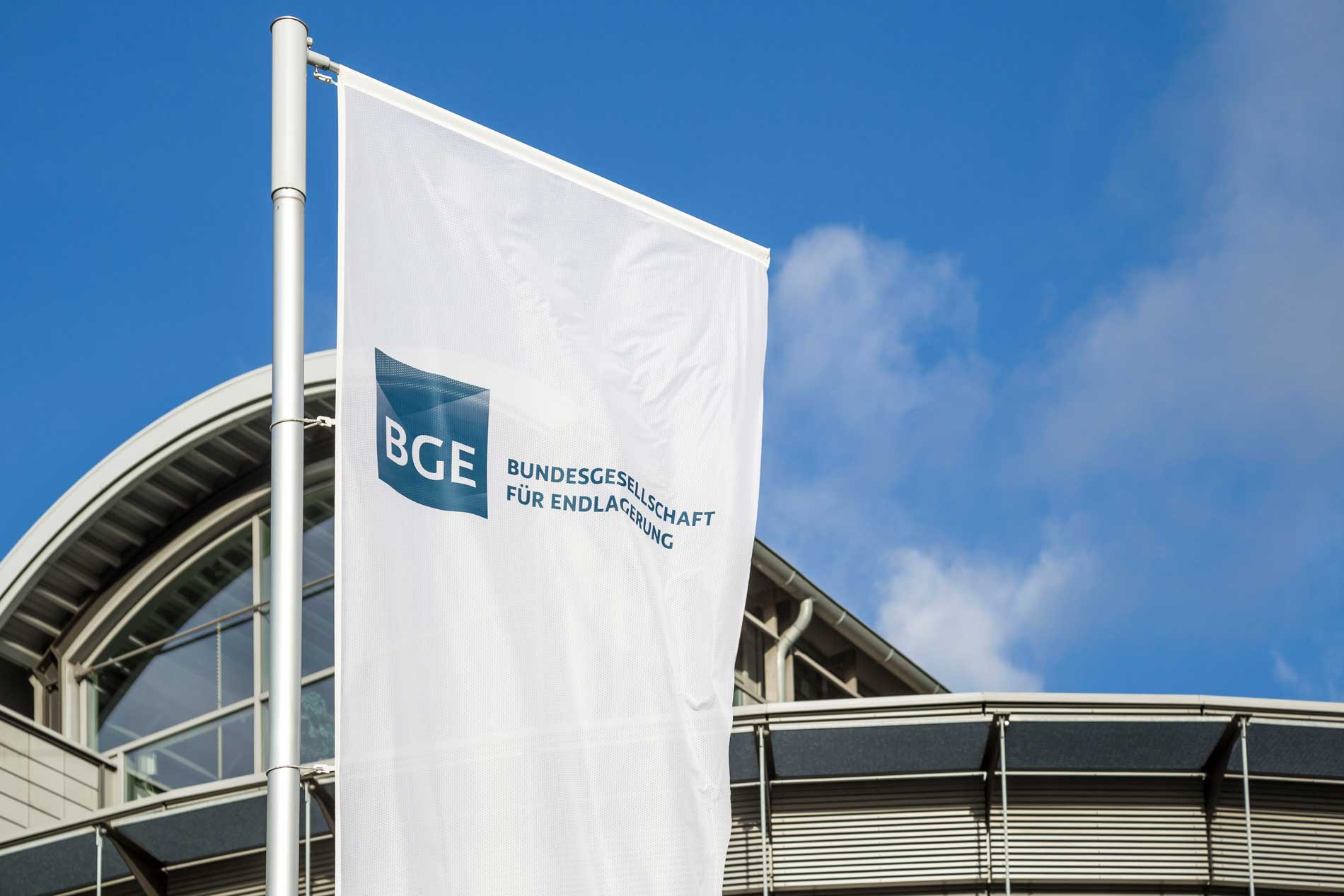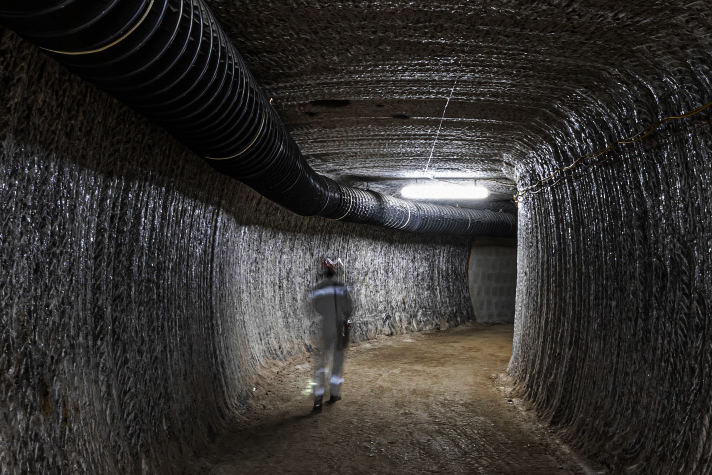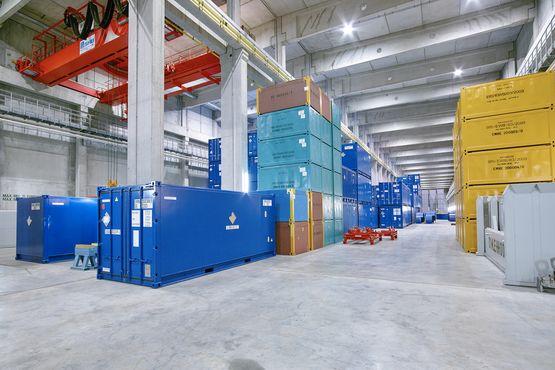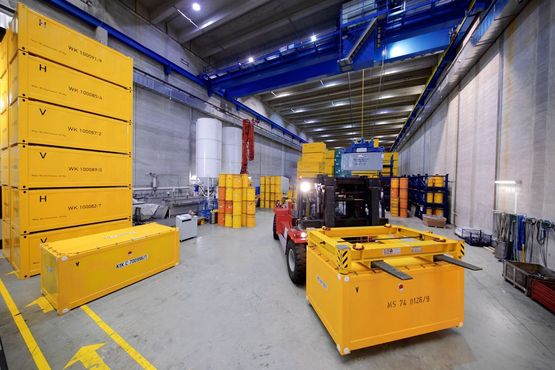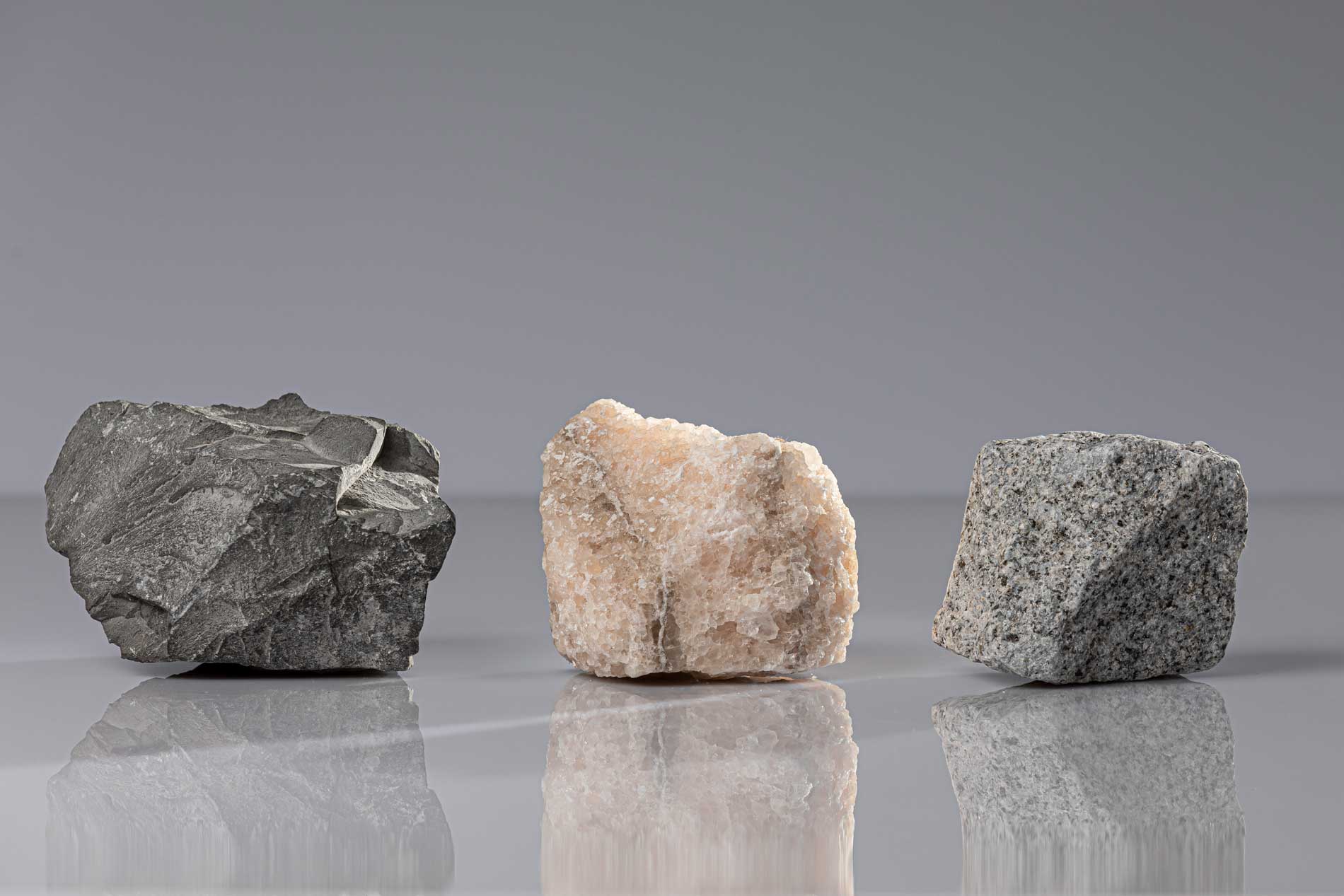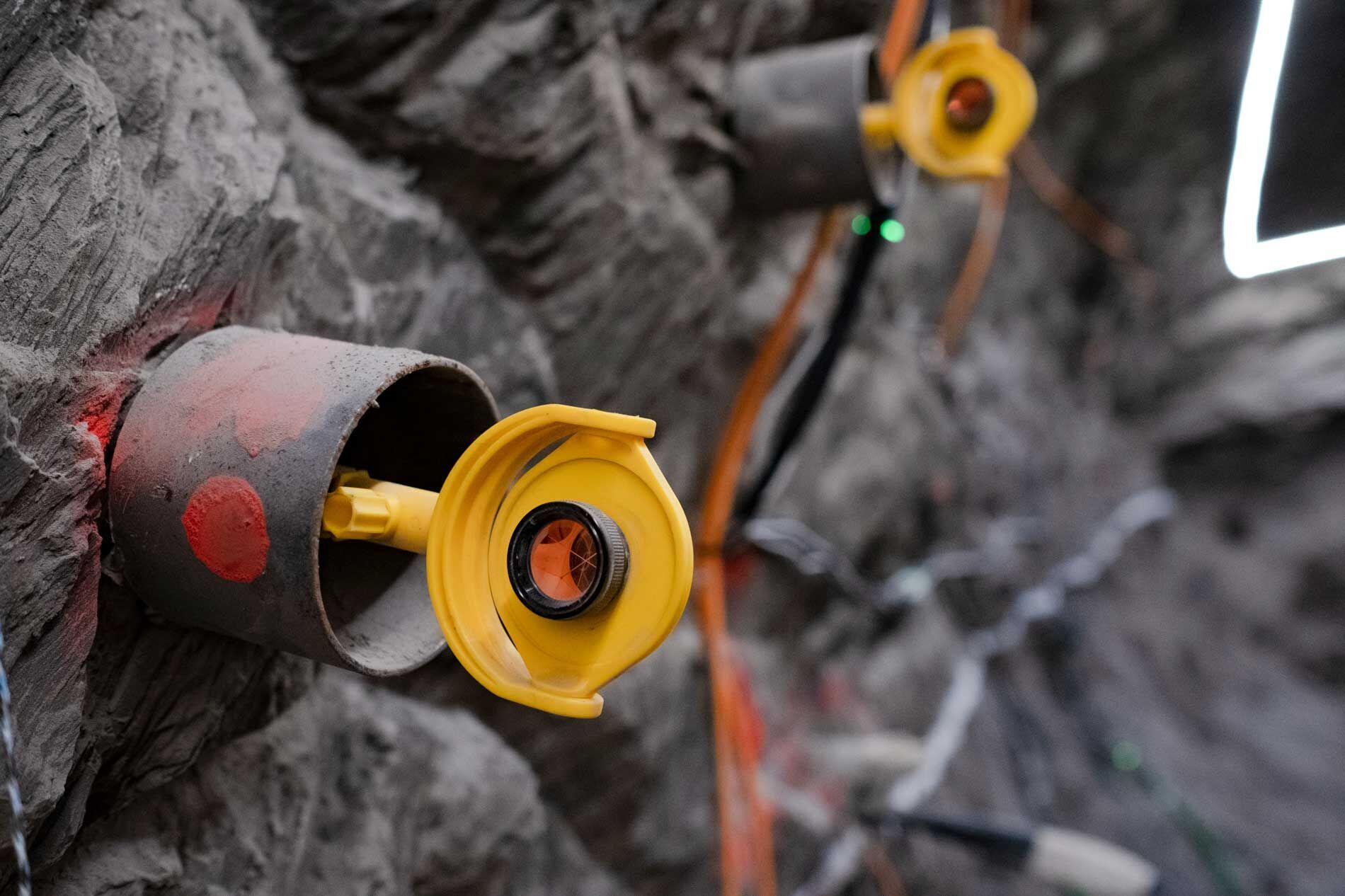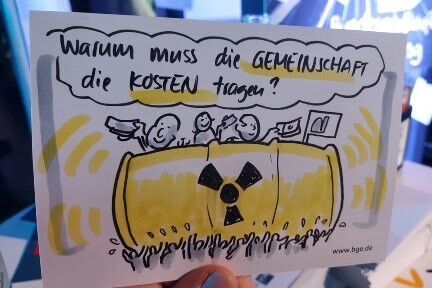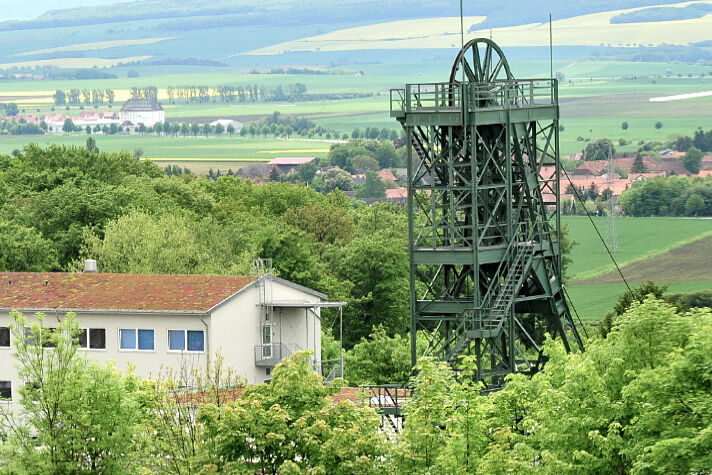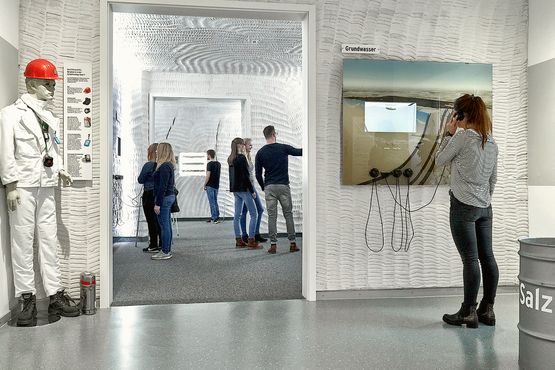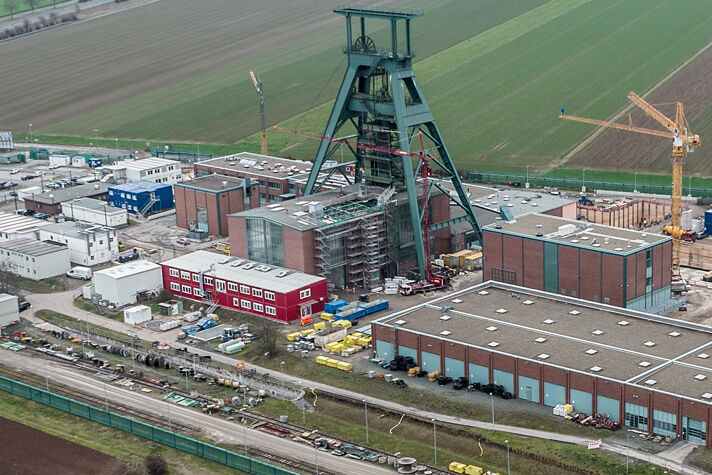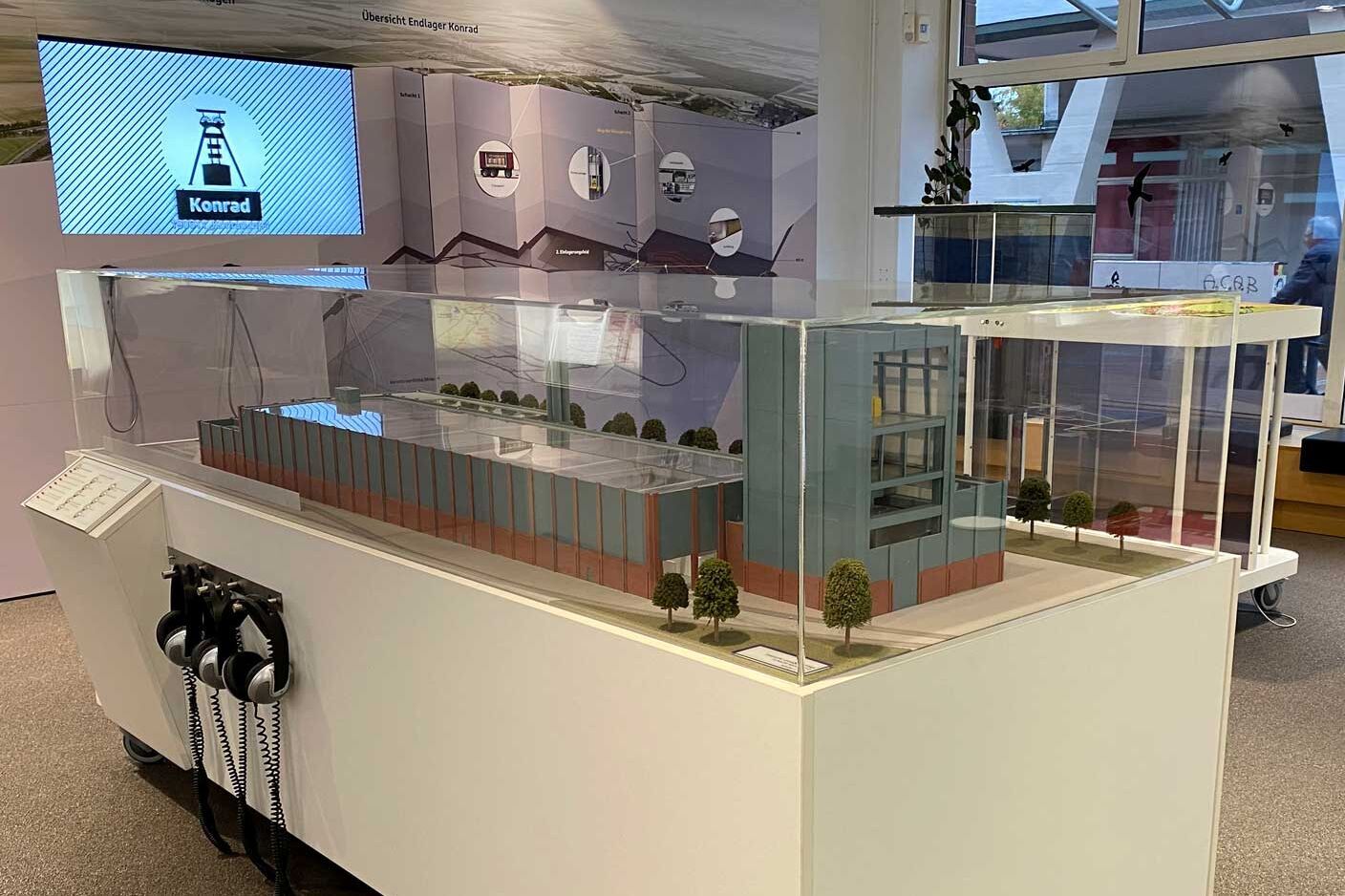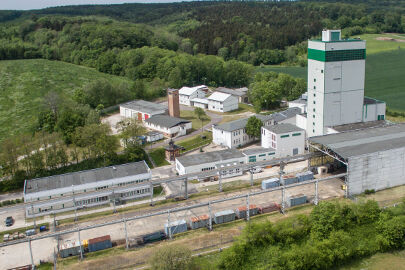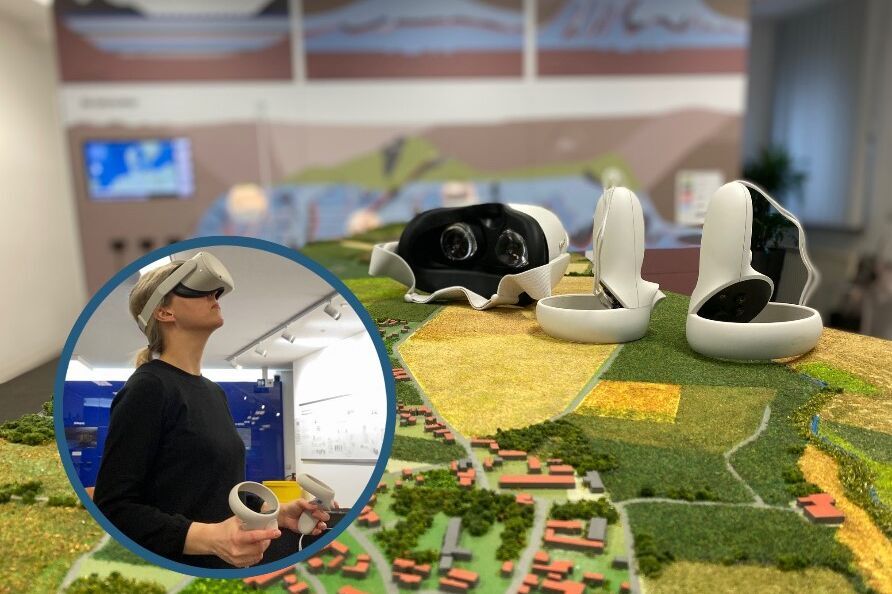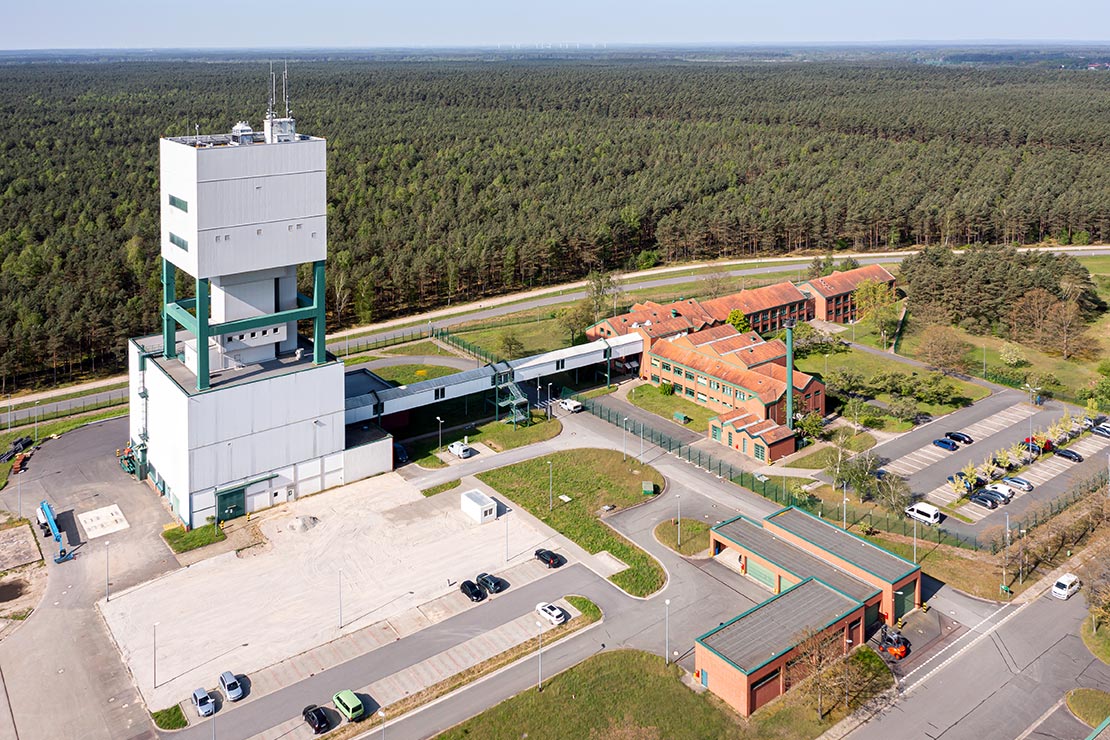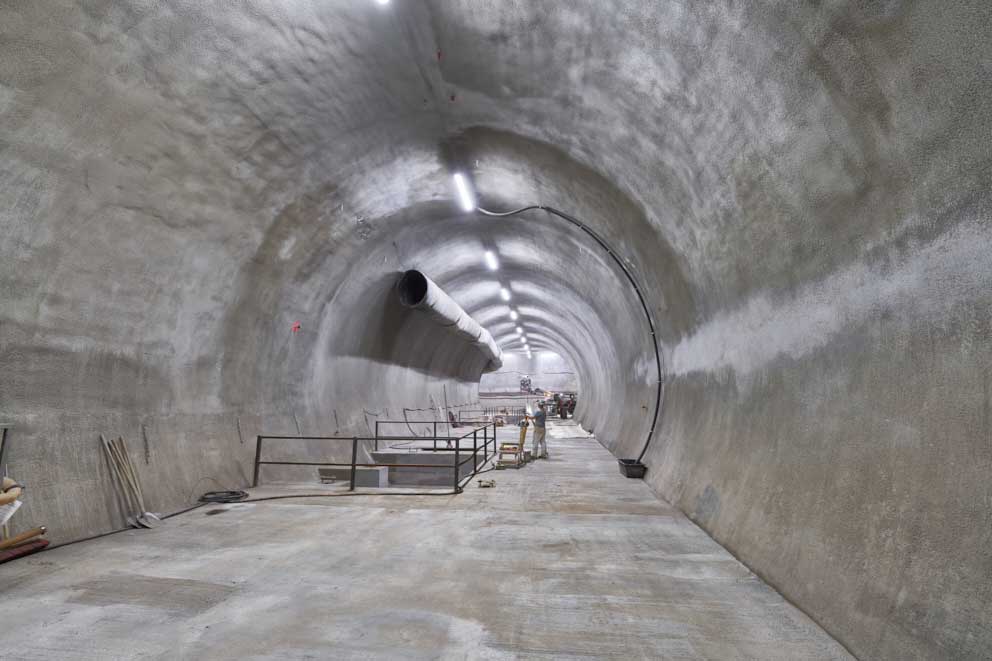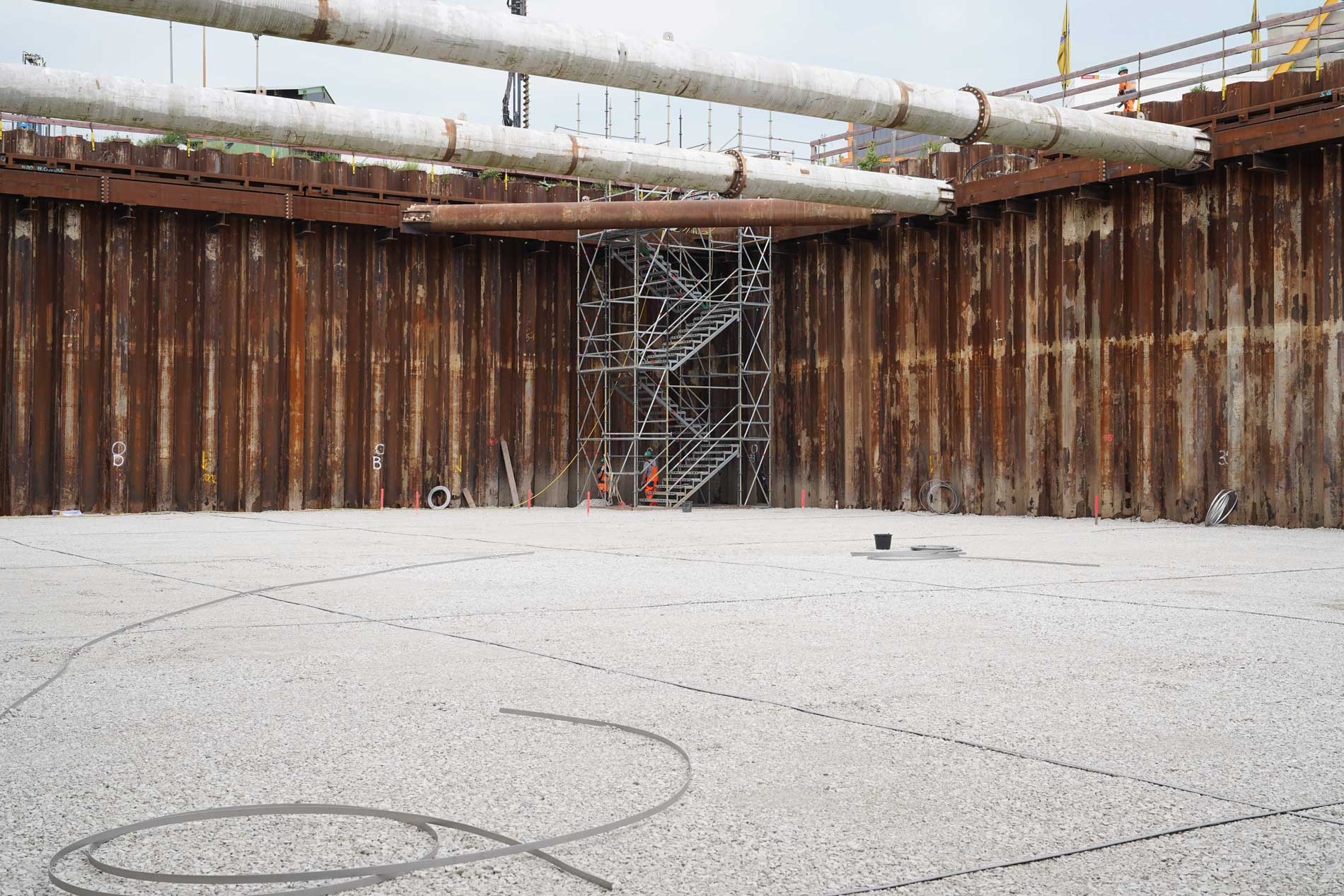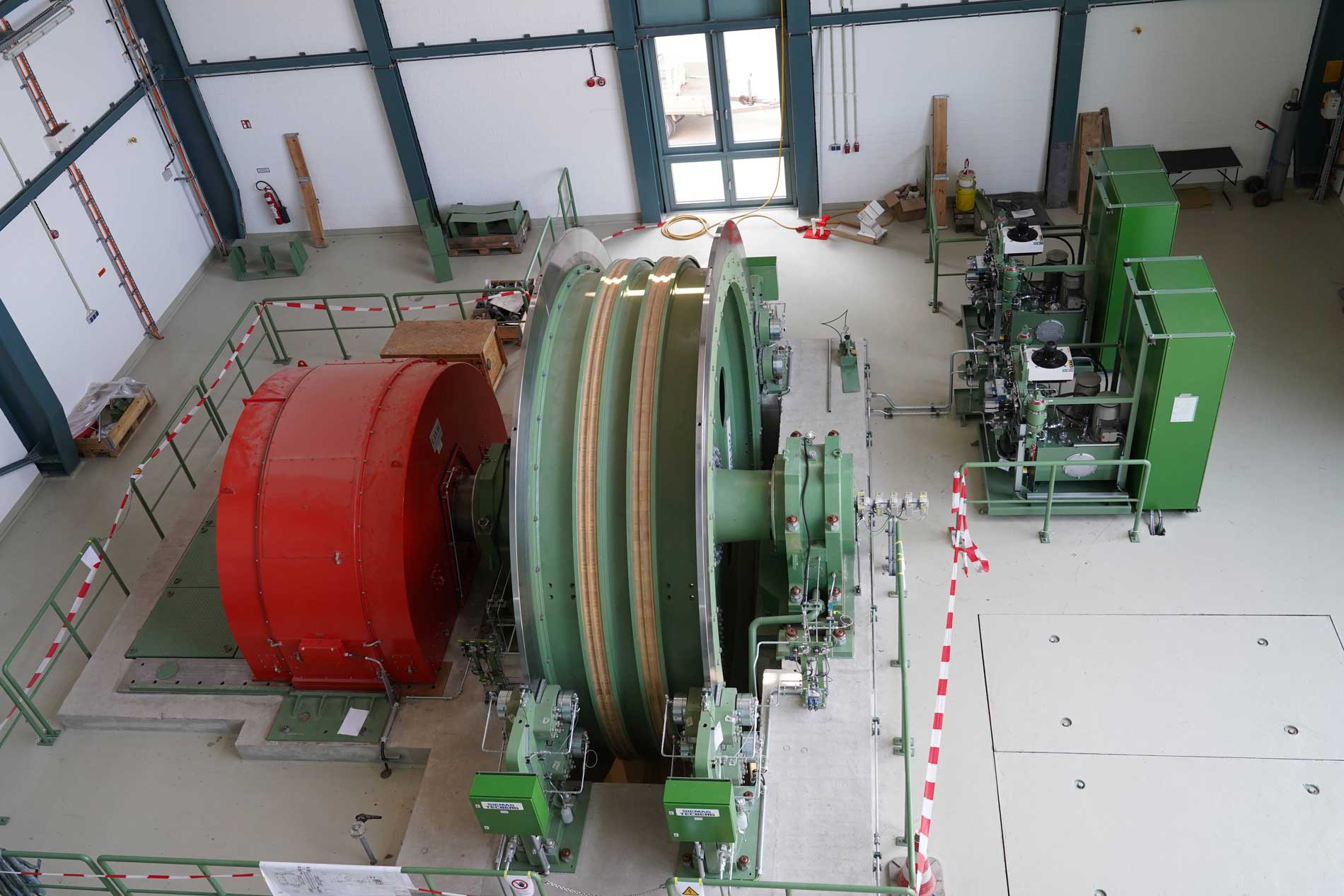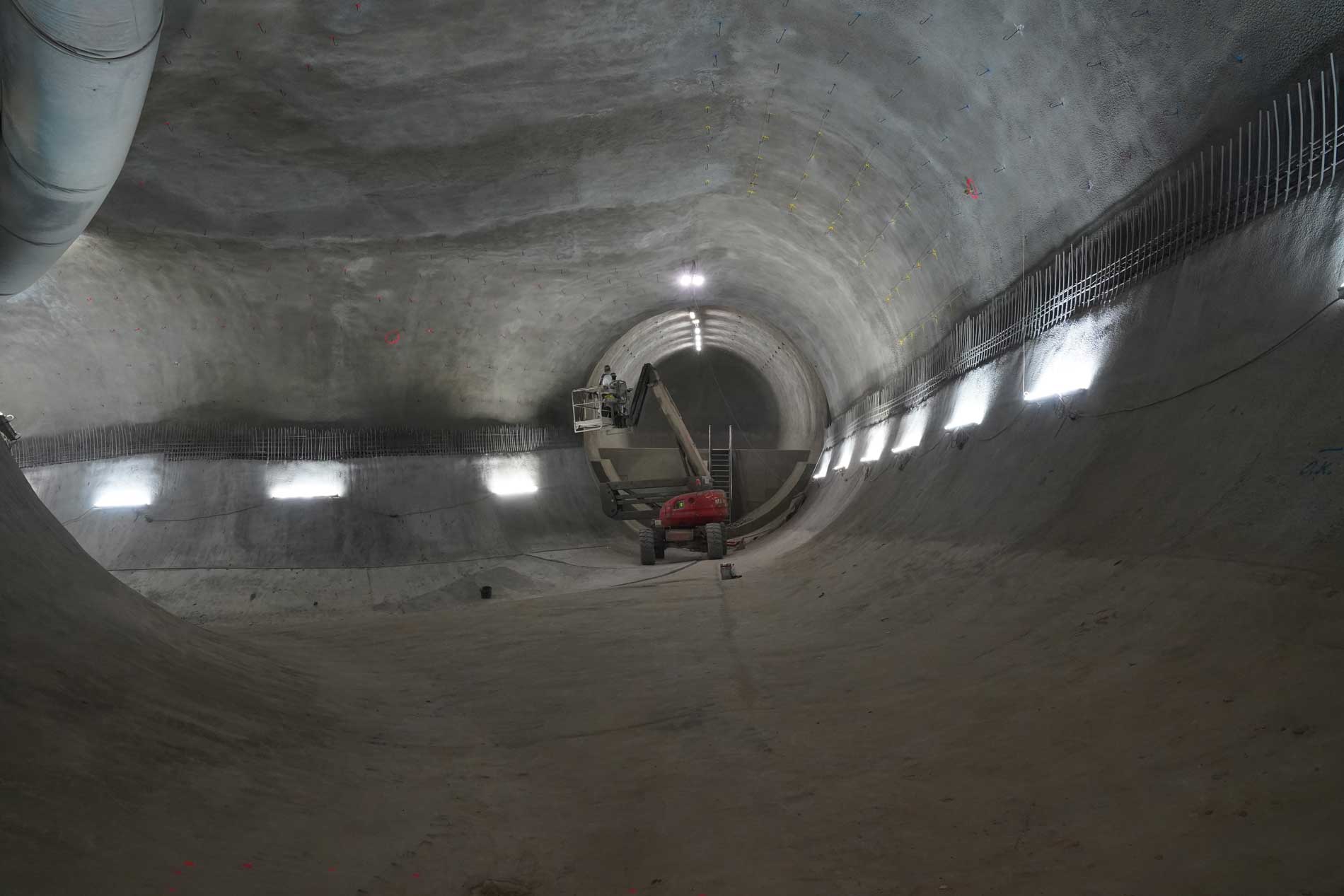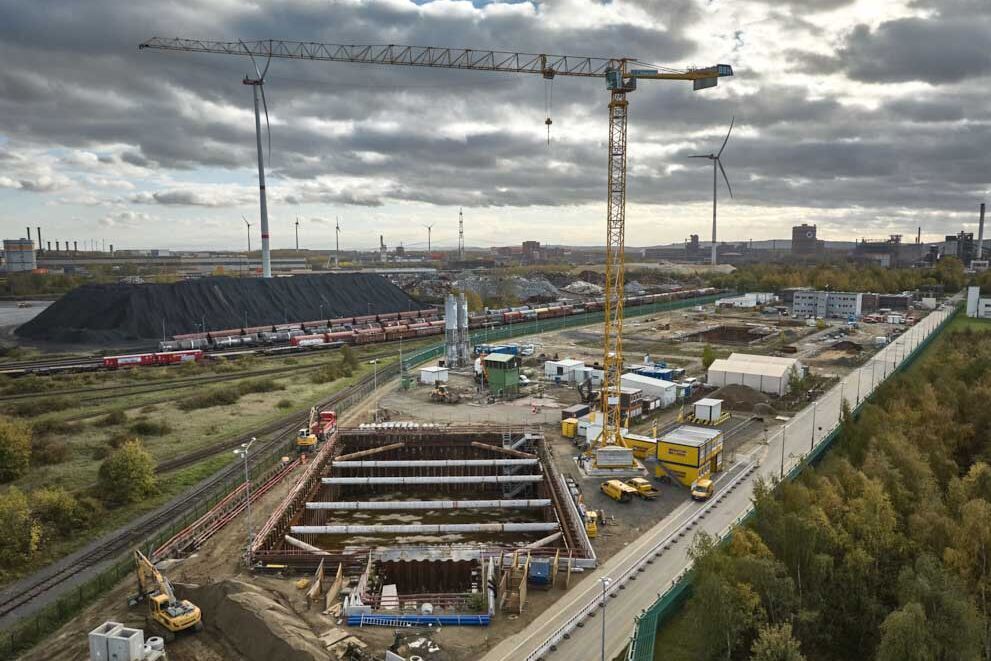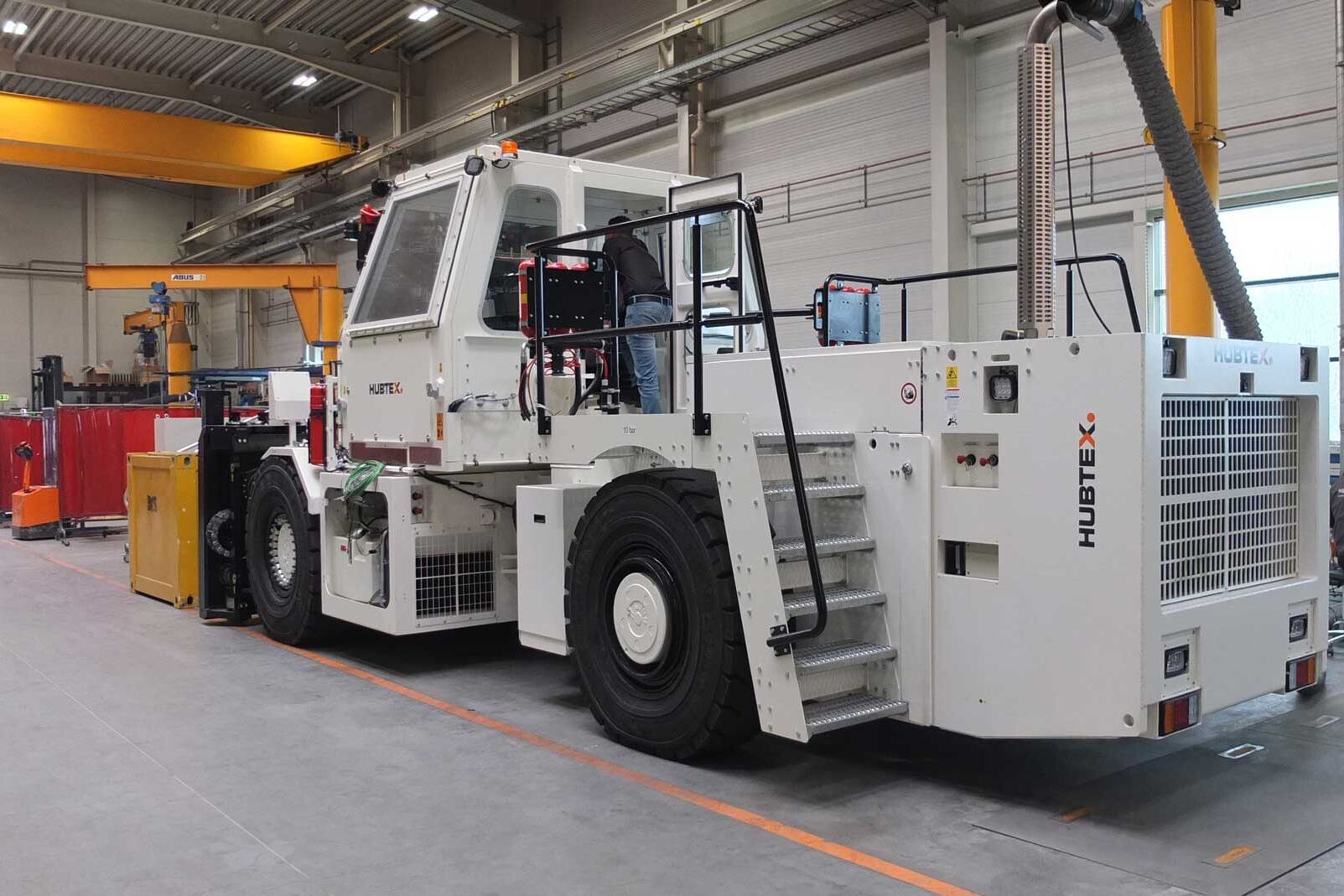
Main topic: Konrad on the home straight
As work progresses on the Konrad repository, a key building block of the National Waste Management Programme for radioactive waste is becoming a reality. The repository will allow the safe final disposal of waste that is currently stored overground in interim storage facilities at over 30 locations in Germany or that continues to arise during the dismantling of nuclear power plants. The Konrad repository therefore represents a significant contribution to the phase-out of nuclear power.
Construction of the Konrad repository has reached an advanced stage. All of the new buildings at Konrad Shaft 1 have been built, and the underground spaces needed to operate the repository are almost complete. The buildings that will later be used to handle the radioactive waste are being built step by step at the Konrad 2 site.
Preparing the Konrad 2 emplacement shaft is a vital step towards the site’s completion. In a reassessment of outstanding building work, the BGE has reached the conclusion that, as of summer 2023, work on Shaft 2 is running about two years behind schedule. Through intensive dialogue, the aim is now to look for ways of speeding up the work. However, it will no longer be possible to complete it by 2027 – as envisaged by the BGE.
- View press release of 13 June 2023
- View "State of completion of Konrad repository" (PDF, 3,7 MB, German only) (PDF, 3,7MB)
More time needed for completion
There are various reasons for the delayed completion of the Konrad repository. The three main reasons are summarised below:
1. It took the BGE longer to restructure contractual relationships with the general planners than was expected when the BGE was founded. The general planners are drawing up the plans for the buildings and installations at Konrad 2 on behalf of the BGE.
2. Following the Fukushima nuclear disaster, improvements were made to the safety requirements for nuclear facilities in Germany, as well as to the safety requirements aimed at protecting against earthquakes. The BGE underestimated the task of incorporating these improved safety requirements into the implementation plans for all buildings, which is proving to be particularly demanding for all parties involved.
3. All of the buildings’ implementation plans are made on the basis of the Konrad repository licence. In many cases, the plans are accompanied by approval procedures under nuclear law. In practice, it has become clear that these procedures cannot be carried out within the time frames that were assumed during scheduling.
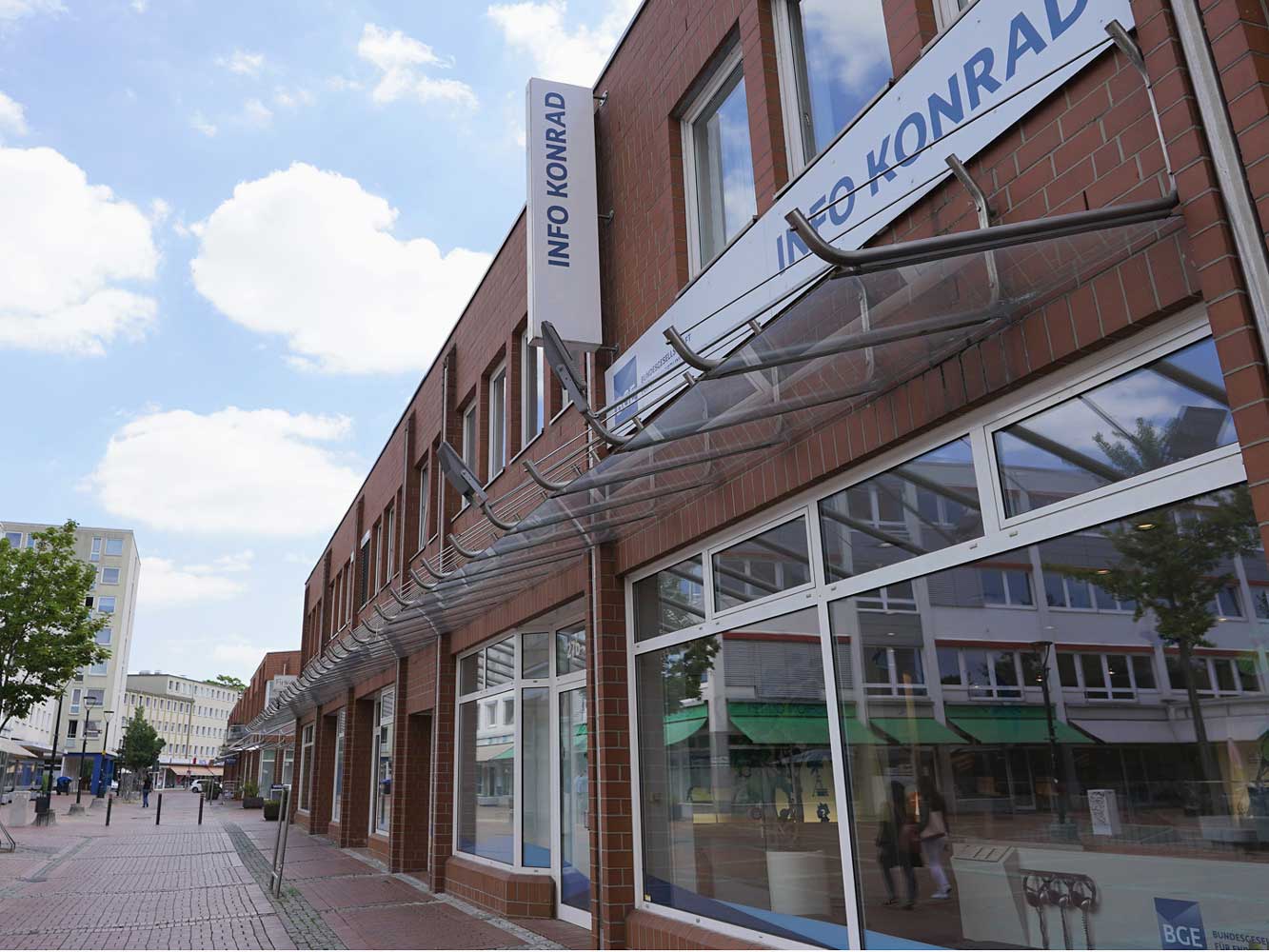
Chemnitzer Str. 27
38226 Salzgitter
phone: +49 5341 4016050
Email: info-konrad(at)bge.de
Opening times
Wednesday and Thursday: 10:00 a. m. – 5:00 p. m. and by appointment
Status of construction work
Despite the scheduling challenges, many subprojects are still running according to the original schedule. Many of them are now complete:
In recent years, numerous buildings have been completed at Konrad Shaft 1. Most recently, construction work has been completed on the guardhouse, the central heating plant and the workshop. The administration and staff building was completed in 2020. All buildings on the Konrad 1 site have therefore been implemented as new constructions. Work is still outstanding on replacing the guide frame in Konrad Shaft 1 and on building a conveyor and loading system to transport rock during emplacement operations.
Underground, all of the mine excavations needed for operation have been created. Special expansion measures are needed in the vicinity of the future control area – an area in which radioactive materials are handled during repository operations. This work, most of which is almost complete, will be followed by the technical installations, systems and components – for example, the necessary radiation protection facilities in the future control area, the washing station facilities, the concrete plant installations for sealing the emplacement chambers, and the technology for ventilating the mine.
So far, at the Konrad 2 site, work has been completed on the building and service yard as well as on a mine water transfer station. The latter is the first building to be constructed according to nuclear regulations. Work is yet to be completed on the central buildings for handling radioactive waste, which must be planned and built according to strict specifications under nuclear law. These buildings include the reloading hall, in which radioactive waste arrives and is reloaded, as well as the winding tower, which is used to transport the waste underground. The deadline-critical project is the conversion of Konrad Shaft 2 and the construction of the new winding tower.
As well as work on the surface installations and inside the mine, it is necessary to plan and build vehicles for operating the Konrad repository. These include the flatbed truck that will transport the radioactive waste within the operational control area as well as various stacking trucks for handling the waste packages and the straddle carrier – a container crane for transferring waste packages at the pit bottom, where the containers are moved out of the shaft and into the transport galleries.
Status: 13 June 2023

